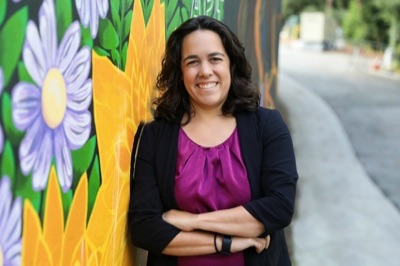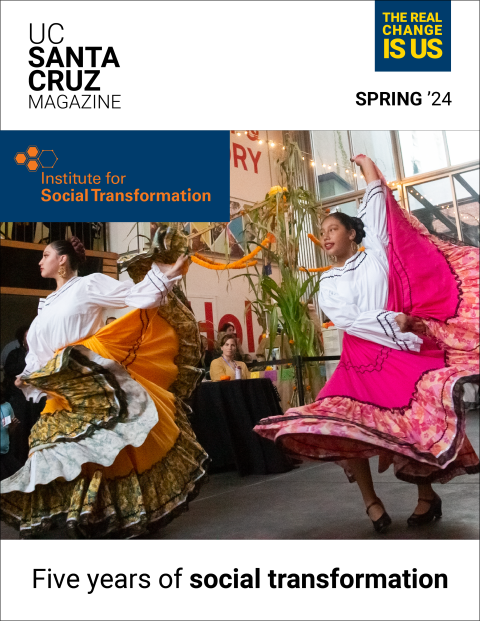In the past decade, there’s been an explosion in media coverage of girl activists. Some, like Swedish climate activist Greta Thunberg and Pakistani human rights and education advocate Malala Yousafzai, have become household names and reached veritable celebrity status.
Professor Jessica Taft, a leading expert in youth activism from UC Santa Cruz’s Latin American and Latino Studies Department, has been watching this development closely. Back in 2011, Taft published a book about girl activists, and at the time, girls were largely invisible in both academic literature and public discourse, despite their long history as leaders in social movements. Now, things are different.
“Fifteen years ago, when I would tell people that I studied girl activists, they’d say, ‘Are there girl activists?’,” Taft recalled. “No one says that to me anymore. There have been girl activists this whole time. It's just that suddenly we're now noticing them.”
While Taft sees opportunity in the increasing visibility of girl activists, she also sees many troubling trends in the ways they’re being portrayed by the media.
In a paper published by the journal Girlhood Studies, Taft performed an extensive analysis of written, English-language media accounts to identify themes in articles about girls’ activism. In particular, she honed in on coverage of some of the most prominent leaders, like Thunberg, Yousafzai, American gun-control advocate Emma González, who uses gender-neutral pronouns, Palestian resistance leader Ahed Tamimi, and Chilean political organizer Camila Vallejo.
Taft found that many of the narratives around these and other girl activists fell back on counterproductive stereotypes that may actually undermine the effectiveness of these young leaders, even as they are seemingly being celebrated. For example, Taft says that girls are often presented as symbols of hope, who will build a brighter future. But part of the appeal of this narrative is that it invites adults to let go of their own concerns and responsibility around societal problems by pinning their hopes for the future on youth.
“Girls are being set up as the ones who are going to do all of the work, and that lets adults off the hook for creating a world in which we can all survive,” Taft said. “That’s yet another burden upon girls, and that seems profoundly unfair.”
This image of girl activists as heroic saviors was another theme that emerged from media representations. And, aside from lulling adults into a false sense of security, this trope encourages the public to place the responsibility for social change on a few exceptional individuals, rather than on governments and other systems of power. It also fundamentally misrepresents how social movements function.
“The daily practice of social movements and the ways that movements are actually effective is not because of an individual celebrity,” Taft said. “It’s because of many unknown people, usually women and people of color, who are doing the everyday work of mobilizing communities, sharing resources, and building organizations.”
Taft says the media focus on heroism makes it harder for the average person to imagine themselves getting involved in social movements, which is often exactly what girl activists are actually calling for. Ironically, part of what obscures this message is that girls are simultaneously thought of as both heroic and, ultimately, harmless, which makes it easier to dismiss their ideas, demands, and political visions.
Older girl activists, like Camila Vallejo, are also frequently sexualized in media accounts, and public perceptions show clear racial biases too. While the most celebrated public figures tend to be young white girls, Black girls are more often portrayed as troublesome or threatening for exercising their agency. And all girls, like other youth activists, sometimes struggle to get their messages across because media narratives are so caught up on the supposed novelty of youthful leaders.
Taft’s analysis—particularly around how gender, race, age, and nationality interact in media portrayals of girl activists—demonstrates that the harmful trends in media coverage are a reflection of deeper cultural problems. But the overall increase in media coverage also shows that these representations can change and evolve, which means they have potential to improve.
“Part of that will require really situating girl activists within their communities of struggle, and we need to emphasize the actual content of their politics,” Taft said. “A lot of that is about how we perceive young people. Our perceptions are still really rooted in this adultist idea of them being less capable. It’s a matter of checking that impulse and asking ourselves what we can actually learn from these young people.”




